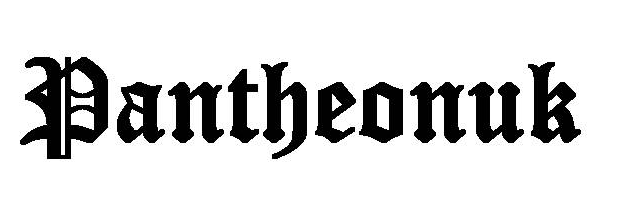Ethereum is becoming increasingly more popular with traders and investors these days, and its native token, Ether, is growing in value. You can buy Ethereum with debit card – it’s pretty easy once you get the use of it. It’s expected that by the end of the year, ETH’s price will sit at $5,000. One reason why Ethereum should be on your investment radar is the potential for spot ETFs to hit the market. There’s roughly a 50% chance of approval by May and a near-certain probability of approval in the next 12 months; delays are part of the SEC’s process, which involves gathering public input. A substantial increase in cryptocurrency exposure will most likely lead to a surge in price as the market anticipates the demand.
Ethereum’s Main Network, Or Layer 1, Is the Blockchain’s Base Layer
Ethereum is a decentralized open-source blockchain network that makes it possible for users to develop and deploy smart contracts and applications that can operate autonomously. It has its own cryptocurrency, Ether, used to pay for transaction fees and computational services. Ethereum is a Layer-1 blockchain because it operates independently from other platforms, such as Bitcoin. It prefers the Proof of Stake consensus mechanism for processing transactions and creating new blocks on the blockchain, where owners offer their coins as collateral for the opportunity to validate blocks and earn rewards. The mainnet is divided into smaller, interconnected networks referred to as shards.
A Layer-1 blockchain is regarded as the most basic form of blockchain technology. It’s the essence or the foundation, if you prefer, of the network, creating a secure infrastructure that allows for various applications and protocols. More often than not, it operates beyond envisioned levels. The main use of the blockchain is as a distributed ledger for cryptocurrencies like Ether, validating transactions and protecting the network from threat actors. The Layer-1 blockchain executes all on-chain transactions, meaning it serves as a source of truth for the public ledger. These transactions include the transfer of ETH from one address to another, transparently and irrevocably recorded on the blockchain.
Layer-2 Solutions Are Built on Top of The Main Ethereum Blockchain
Ethereum’s successful transition from Proof of Work to Proof of Stake was a tremendous achievement. The Merge transferred operations from the Mainnet to the new Beacon Chain, paving the way for increased scalability and efficiency in the Ethereum blockchain. Unfortunately, ETH is still plagued by high gas fees, bottlenecks, and slow transactions. They’re called “killers” for good reason. Ethereum’s protocol favors decentralization and security, which poses challenges in terms of scalability. Layer-2 blockchains offer advantages that are decisive in addressing scalability issues inherent to Layer-1 blockchains. The network protocols are stacked on top of the Layer-1 solution.
Put another way, Layer-2 is a separate blockchain that periodically interacts with the Mainnet to secure transactions and digital assets. It’s an off-chain network, system, or technology that helps extend Ethereum’s capabilities. Examples include:
Optimistic Rollups
Optimistic rollups enable transactions to be processed off-chain while still taking advantage of the security offered by the main Ethereum chain, assuming they’re valid by default. Fraudulent transactions are challenged and removed. The rollups tie together countless transactions, therefore distributing fees across everyone in the rollup. They publish title information about the transaction on-chain, but the execution is realized separately. Optimistic rollups are compatible with Ethereum’s smart contracts, which are used to manage the interactions between Layer-1 and Layer-2 chains. If transactions are confirmed to be invalid, the batch submitter loses their staked cryptocurrency and is removed from the network.
ZK Rollups
Zero-knowledge (ZK) rollups use validity proofs to ensure the correctness of exchanges, demonstrating with mathematical certainty the data submitted to the Layer-1 chain is valid. Not all transaction data is posted on-chain – valid bundled-up transaction batches are submitted from time to time to be executed via off-chain computation. Gas fees remain minimal. One of the key components for success in validating transactions quicker is Merkle Trees, used for generating hashes of large amounts of data. The Ethereum blockchain guarantees no one can fake data on the on-chain records of a ZK rollup. Since the Merkle trees break down large data sets into smaller chunks, the nodes can verify a transaction without downloading the whole block or storing a copy of it.
Generalized Layer-2 Networks Behave Similarly to Ethereum, But Cheaper
Generalized Layer-2 blockchains emulate the performance and functionality of Ethereum’s Mainnet, which means that anything you can do on Ethereum Layer-1, you can also do on Layer-2. The only difference is you enjoy cost-effective gas fees. Examples of generalized Layer-2 blockchains are:
Arbitrum One
Arbitrum One is a chief Layer-1 technology designed to be compatible and consistent with Ethereum. You can use Web3 apps or smart contracts; transactions cost a fraction of what they do on Layer-1. Arbitrum One has released a governance token, ARB, enabling users to get voting rights. Investing has never been easier. Holders can hold and receive ARB securely and efficiently.
Optimism
Optimism is a safe and secure EVM-equivalent optimistic rollup. Your Optimism address is the same as your ETH address, which begins with 0x; it’s blockchain explorer is identical to Etherscan. Optimism is built as a minimal extension to the existing software, so its architecture scales Ethereum without much difficulty. The system runs fraud-proofing to verify transactions.
Boba Network
The Boba Network initially forked from Optimism – it’s a scaling solution that seeks to reduce gas fees, increase transaction throughput, and extend the capabilities of smart contracts. It’s supported by both blockchain and artificial intelligence infrastructure company Enya and the OMG Foundation. Boba’s Hybrid Compute mechanism makes it possible for developers to forge connections from Web3 systems to Web2 computers.
Base
Base is a Layer-2 blockchain built by Coinbase on the open-source OP Stack. It makes transactions faster while taking advantage of the security of the Ethereum Mainnet. The fraud-proof system is currently under development. Due to EVM compatibility, developers don’t have to make great adjustments in their code to deploy their apps on Base. You can access DeFi platforms, manage ETH tokens and NFTs, and so much more.







